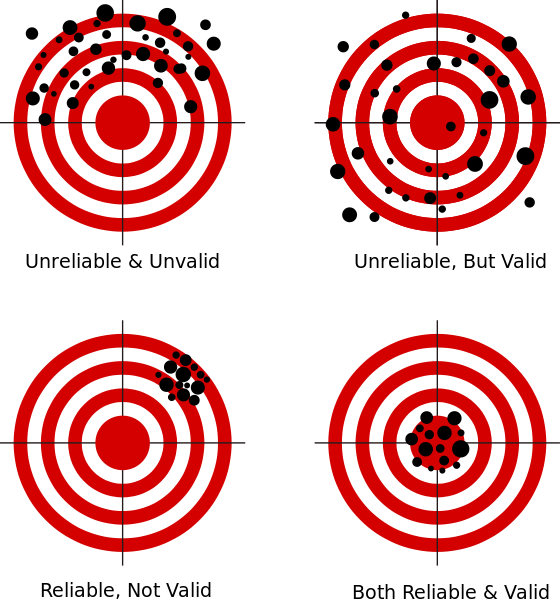
Reliability and Validity: Ensuring Validity External validity refers to whether the results can become generalized. It’s a type of validity used to assess the experiment’s design. It’s a type of validity that seeks to assess how far a measure adheres to existing knowledge and theory of a concept under measurement.įor a researcher to evaluate the validity of any cause-and-effect association, they will have no option but also study internal validity. It’s used to evaluate the limit a measurement gets to cover every single aspect of the concept under evaluation. It seeks to measure the limit to which a result obtained after a measure relates to any other valid measure used for the same concept. Respectively, each type of evidence can be appraised via statistical or expert judgment methods. You can estimate a measurement’s validity based on three kinds of evidence. Reliability and Validity: Types of Validity It seeks to determine whether a researcher will get to obtain the same set of results where different individuals get to carry out the measurement.

In reliability, this is used to check the uniformity of a result through several observers or raters. The question here is whether you will attain the same results if you pay attention to separate fragments of an experiment that have all been designed to measure a similar thing. It is used to assess the reliability of the dimension in question. It seeks to establish whether a tester will obtain the same results if they repeat a given measurement.

It’s a type of reliability used to assess the consistency of a given measurement across time. You can estimate different kinds of reliability using numerous statistical methods: Reliability and Validity: Types of Reliability


 0 kommentar(er)
0 kommentar(er)
